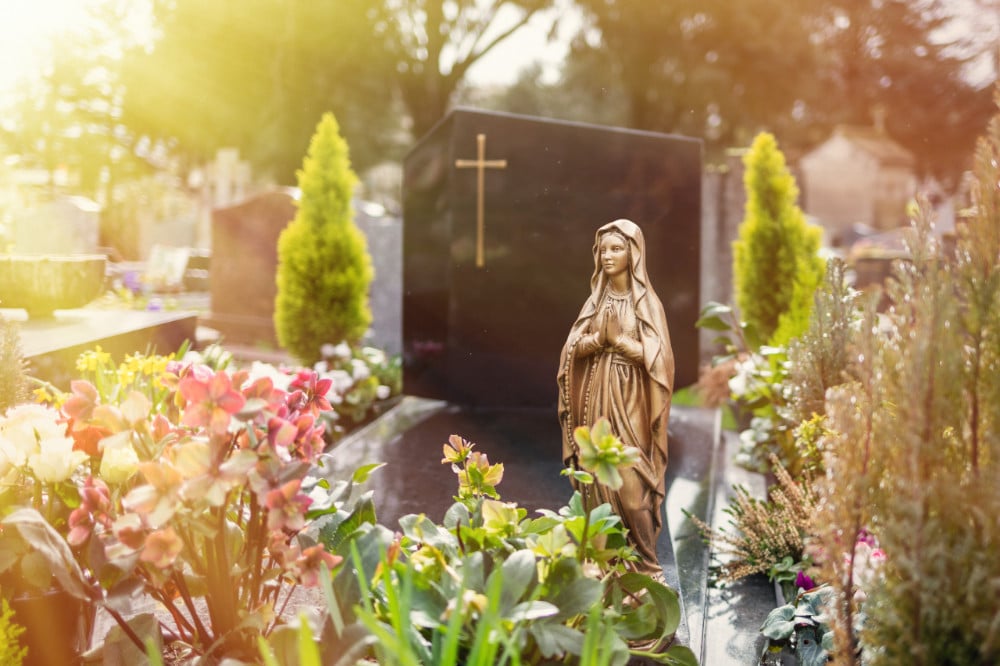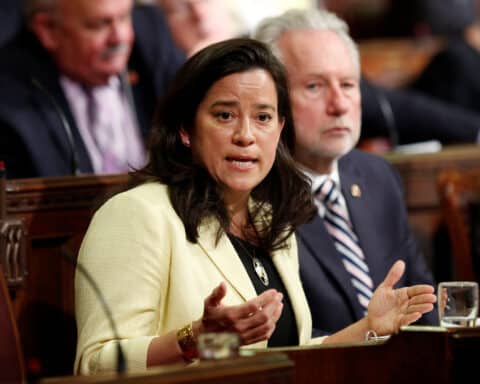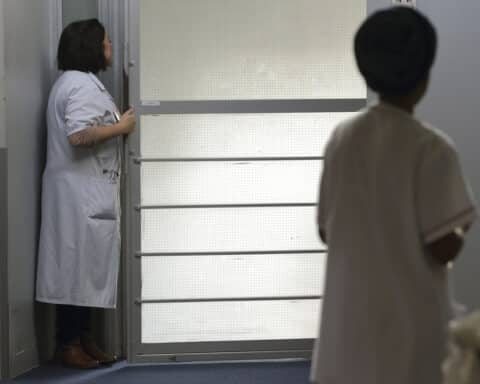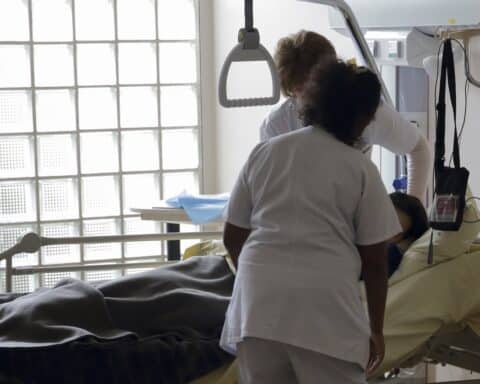Throughout the month of November, we remember and pray for our beloved dead and contemplate the lives of the saints who have gone before us. This month, therefore, is a good time to ponder the meaning of death from a Catholic perspective, as well to reflect on and spiritually prepare for our own inevitable death.
If you ask people today how they hope to die, many will say, “In my sleep, painlessly and suddenly, without noticing.” Yet, there is a prayer, long forgotten now, that Catholics prayed regularly: “Oh Lord, deliver me from a sudden death!” When it comes to dying, Catholics used to pray to God for the exact opposite of what many today hope for. Why? What happened?
To begin, I think it safe to say that most of us Catholics have lost a sense of a Catholic approach to death and dying. That approach reveals that properly living through one’s dying is one of the most important acts of one’s entire life, and it’s worth preparing for ahead of time. As we prepare to enter into eternity to meet God, there is potential for profound depth in prayer and a fuller experience of the sacraments, as well as for deepening, healing and reconciling within human relationships.
In the world at large, there is not merely a loss of the meaning of dying but a death-averse culture in which we hide the sick and dying away from view and simultaneously enact a plethora of laws allowing physician assisted suicide and euthanasia. We have turned away from natural death surrounded by loved ones and the sacraments and have instead turned toward abandonment and killing as an acceptable way to leave this world, or to allow others to leave it.
There are many wonderful Catholic apostolates that help others live a truly Catholic approach to death and dying. Yet, for the most part, the Church needs to regain an explicit awareness of a Catholic ethos in this area, as well as a deeper understanding of the immorality of physician assisted suicide and euthanasia. In fact, the only way to truly end these tragic practices will be not only by our arguments, but also by our witness, which could show the world a better way.
| Terms |
|---|
|
This article is about voluntary physician assisted suicide and euthanasia. In what follows, I group physician assisted suicide and euthanasia together because they are both intrinsically immoral. The opposite would be a natural death — for example, via organ failure, illness, disease or a true accident. I will use the term “pro-choice” to refer to the view that wants to legalize physician assisted suicide and euthanasia, and I will use “pro-life” for the position of the Catholic Church and those who oppose legalizing them. I will comment on a problematic aspect of the term “pro-choice” below. |
What is physician assisted suicide and euthanasia?
According to Evangelium Vitae (Pope St. John Paul II’s encyclical, “The Gospel of Life”): “Euthanasia in the strict sense is understood to be an action or omission which of itself and by intention causes death, with the purpose of eliminating all suffering. ‘Euthanasia’s terms of reference, therefore, are to be found in the intention of the will and in the methods used'” (No. 65, citing the 1980 Vatican Declaration on Euthanasia).
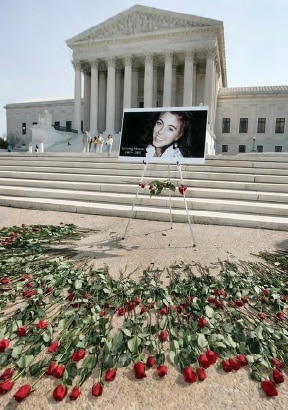
The method used in physician assisted suicide and euthanasia by action is a lethal overdose of a drug. The overdose can be administered by a doctor or, in some jurisdictions, by other health care providers (euthanasia) or taken by the patient (assisted suicide). In the latter case, the patient must obtain a prescription from a health care provider. With physician assisted suicide and euthanasia by omission, the method used is starvation and dehydration. The intention in both cases is the deliberate ending of the life of the patient.
Two famous cases illustrate the difference between action and omission. In voluntary assisted suicide or euthansia by action, both the doctor and the patient have the intention to deliberately end the life of the patient to bring about an end to suffering; this was the case with Brittany Maynard. The Terri Schiavo case was euthanasia by omission. Though she was disabled, she was not dying; she just needed help with eating and drinking. Her source of nutrition and hydration was removed by court order, and she died by starvation and dehydration.
Changing the legal meaning of ‘to kill’
Euthanasia is legal in a handful of countries, the most well-known being the Netherlands and Belgium. It might surprise some Americans that Canada has also legalized euthanasia. In countries where euthanasia is legal, physician assisted suicide is also legal. Assisted suicide is legal in nine U.S. states and Washington, D.C. Euthanasia is illegal throughout the U.S., perhaps because the probability of medical malpractice lawsuits is much higher if the doctor injects the lethal dose than if the patient takes it.
The pro-choice and pro-life sides are in agreement that physician assisted suicide and euthanasia is death by deliberate killing. The disagreement between them is whether that should be legal or not. They also disagree on the morality of physician assisted suicide and euthanasia. In fact, the moral issues at play are the underlying basis for the disagreement on the legal question.

within a year. CNS photo/Stefan Wermuth, Reuters
In words such as “homicide,” “suicide” and “genocide” the common ending comes from the Latin verb occidere, which means “to kill.” Of late, the pro-choice side has dropped the terms physician assisted suicide and euthanasia and refers instead to medical assistance or aid in dying (MAiD). The purpose of this euphemism is to distance the concept of killing from physician assisted suicide and euthanasia.
The currently pending Lila Mansfield Sapinsley Compassionate Care Act to legalize physician assisted suicide in Rhode Island, which it refers to as MAiD, states in its final section, “Action taken in accordance with this chapter shall not be construed for any purpose to constitute suicide, assisted suicide, mercy killing, or homicide under the law.” The clause “under the law” is important here. With this, a distinction is created between the real and the legal meanings of “to kill.”
The real meaning of “to kill” is to do something on purpose to a being that is alive in order to make it be dead. This is happening in physician assisted suicide and euthanasia; in fact, that is the whole point of those initiatives. Since killing the innocent is immoral, there are a slew of long-standing laws already on the books related to it. Some cases of killing have been allowed, but this has always required justification. Traditionally, examples were self-defense, just war and capital punishment, though the latter has been deemed “inadmissible” according to a recent change in the Catechism as directed by Pope Francis. Whenever self-defense and just war are justified, it remains nonetheless tragic, and so we strive to avoid them, and it is best if they are never needed. And so, while tragic, killing people because they are bad and dangerous is sometimes justified. But it is no justification to kill someone because they are sick and weak; doing so is intrinsically immoral and a crime. The pro-choice side must know that there is no justification for physician assisted suicide and euthanasia, and so they want to remove the use of the term “killing” altogether, so that people’s minds don’t go looking around for a justification and realize the horror of what we are doing.
Since MAiD legalizes unjustified killing, the Rhode Island Act (and I suspect this is the same in all other states) dedicates many passages to insisting that that for non-physician assisted suicide cases of killing the innocent, laws related to homicide, suicide and life insurance still apply, but when assisted suicide, no one will be prosecuted. Some examples are that doctors shall not be subject to any civil or criminal liability as long as they document in the patient’s record that every single guideline has been met; that life insurance policies must pay out, unlike in cases of non-doctor assisted suicide; and that “duty to aid” laws, which require bystanders to help people in grave physical harm, would still apply in all cases other than physician assisted suicide but not in cases of assisted killing.
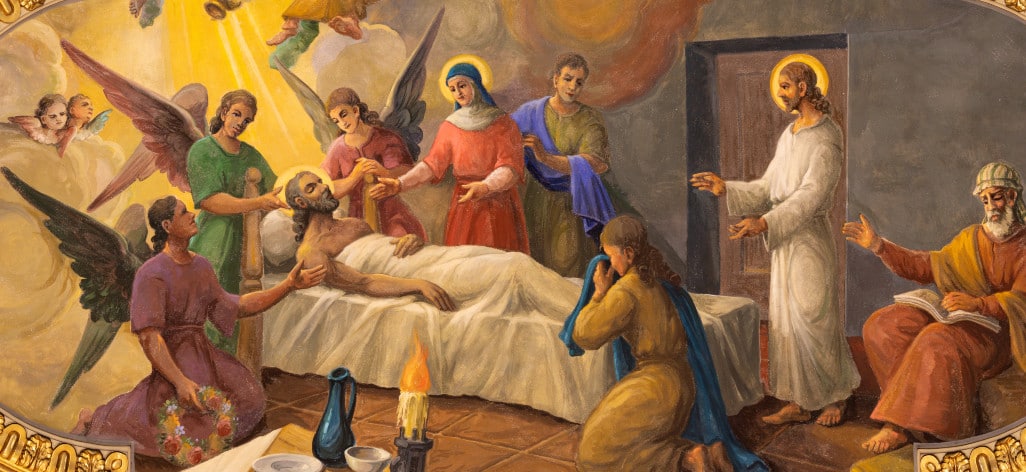
Behind the slippery-slope
Bills to legalize physician assisted suicide and euthanasia are loaded up with numerous restrictions because that is the only way to get a bill to pass where these procedures are illegal and still felt to be wrong by many. The initial proposal will be as restricted as it needs to be to get the populace to accept it. Examples of typical restrictions that must be met prior to dying are age limits, waiting periods, second medical opinions, psychological evaluations, prognoses of a six-month life expectancy and so on. But by allowing for even one person to die legally by physician assisted suicide or euthanasia, the pro-choice side achieves a total victory, for they then have an opening that they can exploit to expand these offerings as far and wide as they please.
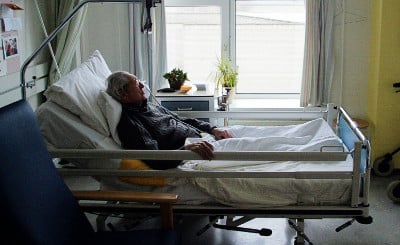
The reason for this is because with passage of such a law, a 180-degree shift is achieved — namely, going from a situation in which doctors never use their skills and training to participate in killing patients to one where doctors do participate in killing patients. After that change, tussling over requirements becomes a relatively minor matter. The restrictions just put a figurative fence around which sick people we have decided to kill, masking the intrinsic immorality of physician assisted suicide and euthanasia in ways that give the appearance of being sensible. But after legalization, the fence is easy to expand and eventually to knock down completely, as the restrictions begin to seem unfair to those who do not meet one or more of them and one by one they are removed. This is referred to as the slippery slope, and it always happens.
For example, in the Netherlands and Belgium, euthanasia is now legal for mental illness. In 2020, a widely reported story told of an elderly Canadian woman with no terminal condition or serious pain who, during the lockdowns, was legally euthanized due to loneliness. The in-depth official governmental MAiD data analysis reveals that of 9,950 people euthanized in Canada in 2021, 17.3% listed “isolation and loneliness” as a reason for their decision. The criteria for MAiD in Canada has been reduced to “intolerable physical or psychological suffering that is caused by their medical condition or their state of decline and that cannot be relieved under conditions that the individual finds acceptable,” and so it is basically the case that MAiD is available in Canada for almost any reason. In Ireland, there is an explicit call for physician assisted suicide to simply be available for everyone — that is, to remove all restrictions.
The pro-life side needs to be careful not to base its argument exclusively on the danger of the slippery slope, because then the pro-choice side will frame the debate in terms of putting in place “restrictions to prevent abuses.” But to frame the question that way is a red herring, which, when fallen for, leads pro-life people to play unwittingly right into the hand of the pro-choice side. The trick is the conflation of two meanings of “abuse”: 1) abuse is only the killing via physician assisted suicide and euthanasia of any person who does not meet one or more of the legal guidelines, and 2) abuse is the killing via physician assisted suicide or euthanasia of any person. By entering the debate exclusively on the basis of the danger of the slippery slope, the premise is tacitly accepted that abuse occurs only when assisted suicide and/or euthanasia is done to people outside the restrictions, and in this way, the pro-life person unwittingly accepts the false premise that killing people within the restrictions is not wrong.
We must argue for the dignity and preciousness of every person and the wrongness of abandoning any person. We should not allow our shock at the slippery slope in Canada to cause us to forget the very first person who was legally killed via physician assisted suicide in Oregon. As I said in my online piece, “What’s love got to do with it: The ethical contradictions of Peter Singer”: “To kill or abandon one single human person is, in a certain sense, just as horrible as killing or abandoning thousands. Since persons are irreplaceably precious, killing one of them represents an infinite crime, and so killing many is not a ‘greater’ evil in a quantitative sense, such that when you reach a certain number, say 100,000, only then does immorality kick in.”
Catholic ethics
With respect to the ethics of death and dying from a Catholic perspective, there are two errors to avoid: overzealous treatment and physician assisted suicide and euthanasia. Let us now consider overzealous treatment. Since death is inevitable, there comes a time when the disease or physical condition is ending the life of the patient, and at that point it is morally legitimate to withhold or withdraw extraordinary or disproportionate treatment (cf. Catechism of the Catholic Church, No. 2278). This is not to kill the patient, as the disease is why the patient dies; and therefore, this is properly understood as the humble acceptance of the approach of death. But even in this situation, all ordinary care remains morally obligatory (cf. CCC, No. 2279). Ordinary care is care that, if removed, would either cause the death of a patient who is not dying or, in a patient who is dying, would amount to deliberately increasing the speed of their death for reasons unrelated to the disease. Simple examples would be to deliberately discontinue bed care to prevent bed sores or to refuse to give an insulin shot to provide comfort. The case of Terri Schiavo mentioned above is an example when nutrition and hydration via a feeding tube was ordinary care, since she was not dying and her body was assimilating food and water normally. There are some situations in which assisted nutrition and hydration may be withdrawn.
Many people want to know whether there is a list of all the things that count as ordinary care. Abstractly speaking, there is no such list because this will depend on the unique situation of each patient. Some think that this fact introduces an element of moral relativism into the teaching, but it does not. This is because, in each unique case, it can be determined which treatments are extraordinary and which are ordinary. Once that is clear, the patient or health care proxy can decide whether or not to remove the extraordinary treatment, but they may never stop ordinary care.
In many cases, it can take careful, difficult discernment and discussion with doctors and spiritual directors to determine whether a treatment is extraordinary or ordinary. As long as the intention is not to kill, but always to care, then the family should pray, discern and then act, trusting God with the final decision. There are many helpful Catholic guides to aid discernment in these situations.
The Catholic view includes the humble acceptance of the approach of death, which is completely different than assisted suicide and euthanasia laws, which are about legalizing the killing of patients with an overdose.
Freedom, autonomy and consent
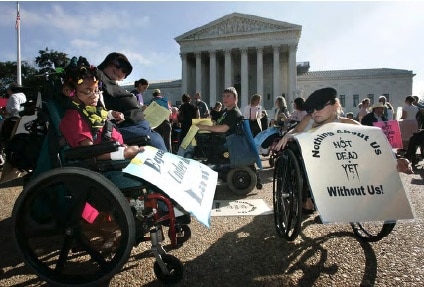
In his famous oath, Hippocrates vowed, “I will never give a deadly drug to anybody who asks for it, nor will I make a suggestion to this effect.” The part about the suggestion has always intrigued me. A precursor to Evangelium Vitae in 500 B.C., Hippocrates clearly grasped the horror of suggesting to the vulnerable that they might consider being killed. Through the legalization of assisted suicide and euthanasia, not only doctors but also the healthy in society, however unwittingly, suggest to the sick that they should end their lives. Within this tacit suggestion is a coercive element that grates against true freedom. The (legal) “permission” for assisted suicide plants in vulnerable minds the belief that they are a burden. Soon, the “right to die” begins to feel like a “duty to die.” Pressure from doctors would be bad enough, which Hippocrates clearly saw, but add in everyone else in society, and it becomes unbearable.
In a poignant piece against euthanasia, French novelist Michel Houellebecq recently wrote, “I can easily imagine myself asking to die in the hope that others reply: ‘Oh no, no. Please stay with us a little longer.'” The society-wide suggestion that the legalization of assisted suicide represents preempts that precious thought and replaces it with a sense of abandonment and the implication that one should be dead. Insofar as coercion is the opposite of freedom, the term “pro-choice” is a misnomer, as the so-called right to die cramps rather than frees. In a place where physician assisted suicide and euthanasia are illegal, on the other hand, vulnerable persons rest assured that everyone is committed to caring for them until they die a natural death, which frees them to die with true dignity, the dignity of a child of God.
The pro-choice side also holds that by criminalizing assisted suicide and euthanasia, one violates freedom by violating the principle of personal autonomy. The answer to this objection depends on gaining the insight that these acts, at bottom, are forms of abandonment, the contrary of the love we should have for every person. Consent is not like magic pixie dust that can be sprinkled on any action whatsoever, making it thereby morally good. Some actions are inherently degrading, and consenting to those actions does not remove the degradation.
‘Ars moriendi’
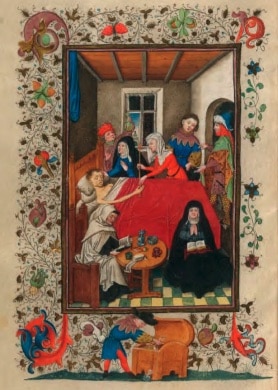
Facing suffering and death can be overwhelming; John Paul II wrote about this profoundly and sensitively in Salvifici Doloris (“On the Christian Meaning of Human Suffering”). With the advent of modern medicine, coupled with our death-averse culture, we can say that the fear of dying alone connected to machines is a legitimate fear. To address this, we need to reevaluate our priorities as a society.
To take one example, we spend so much time, money and personal enthusiasm participating in the various professional sports seasons (here I am not making a wholesale critique of professional sports), that if we could just redirect a fraction of that money, time and personal enthusiasm to acknowledging the full humanity of the sick and caring for them, they would not feel so scared and alone, human relationships would be enriched, and we would all become a little more human.
A long-forgotten and beautiful Catholic tradition is the ars moriendi, which means “the art of dying.” It included methods of preparing for a holy death, and it emphasized making the sick person the center of attention, surrounded by family, friends, health care providers and the priest. This is beautifully depicted in many medieval paintings. We should build a society that surrounds the vulnerable with loving care until they die a natural death — an ars moriendi for the 21st century.
The Gospel of Life
Returning to the opening point of this essay — namely, the importance of restoring the lost Catholic ethos of death and dying — I will close with a beautiful passage from Pope St. John Paul II’s “The Gospel of Life”:
“For this to happen, we need first of all to foster, in ourselves and in others, a contemplative outlook. Such an outlook arises from faith in the God of life, who has created every individual as a ‘wonder.’ It is the outlook of those who see life in its deeper meaning, who grasp its utter gratuitousness, its beauty and its invitation to freedom and responsibility. It is the outlook of those who do not presume to take possession of reality but instead accept it as a gift, discovering in all things the reflection of the Creator and seeing in every person his living image. This outlook does not give in to discouragement when confronted by those who are sick, suffering, outcast or at death’s door. Instead, in all these situations it feels challenged to find meaning, and precisely in these circumstances it is open to perceiving in the face of every person a call to encounter, dialogue and solidarity.”
| Death was not part of God’s original plan |
|---|
 Due to the Fall, we now must undergo suffering, pain, sickness and death. However, death, and the sickness that precedes it, was not part of God’s original plan for human beings. For unlike angels, we are composed of body and soul — this is our very way of being. In a sense we don’t just “have” a body or inhabit one, but rather, we are our body, and this is deeply good (cf. Gn 1:1-31). This very nature of ours as embodied persons is the foundation for the Catholic belief in the resurrection from the dead, by which is meant the resurrection of our bodies that undergo corruption after death, but will be restored, glorified and reunited with our separated souls at the Resurrection, and we will then live so as our true full selves for all eternity. |
Peter J. Colosi, PhD is associate professor of philosophy at Salve Regina University in Newport, Rhode Island, and the author of “A Catholic Anthropology and Medical Ethics” in Catholic Witness in Health Care (CUA Press).

